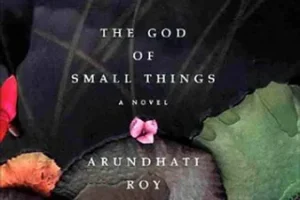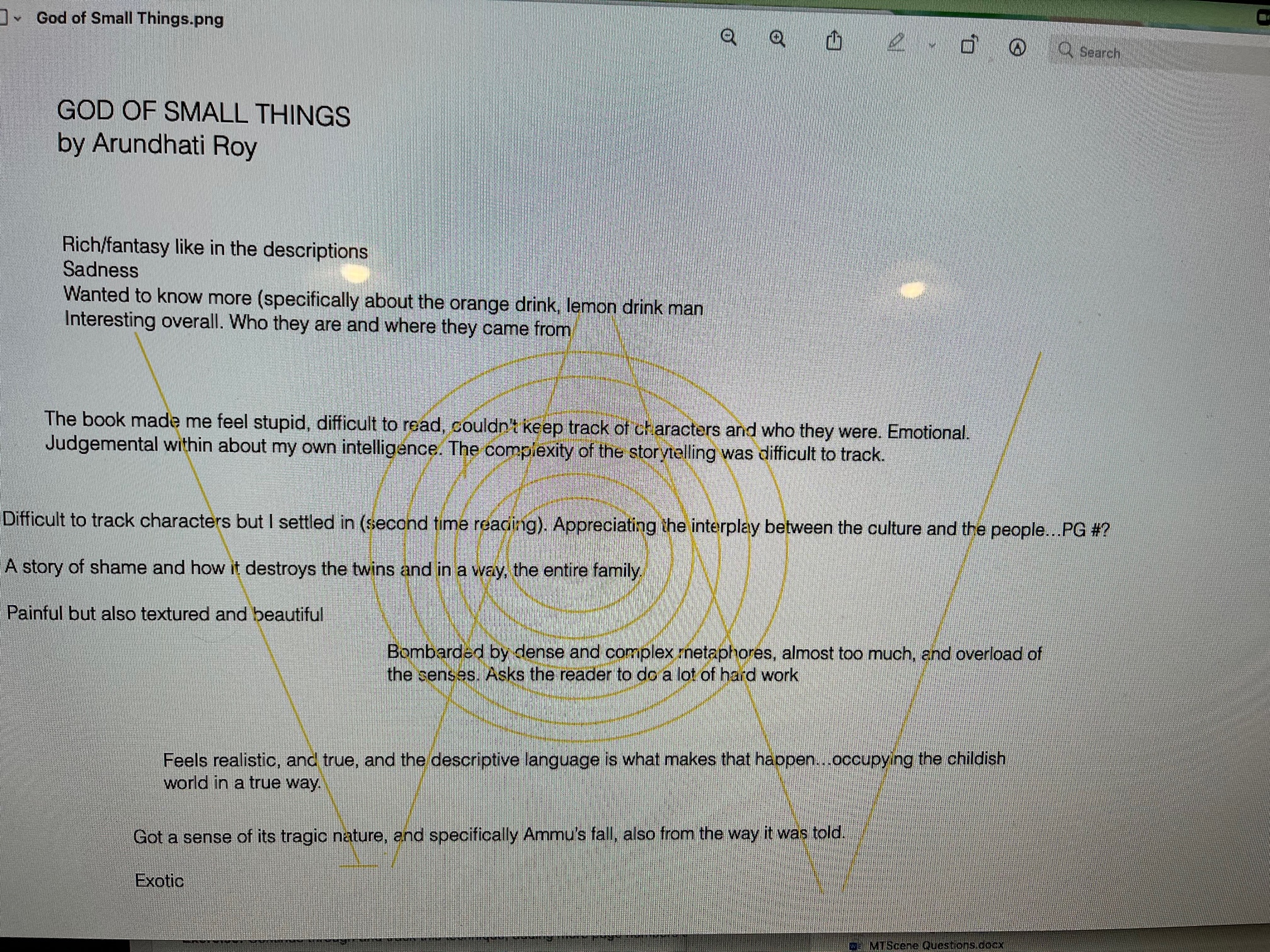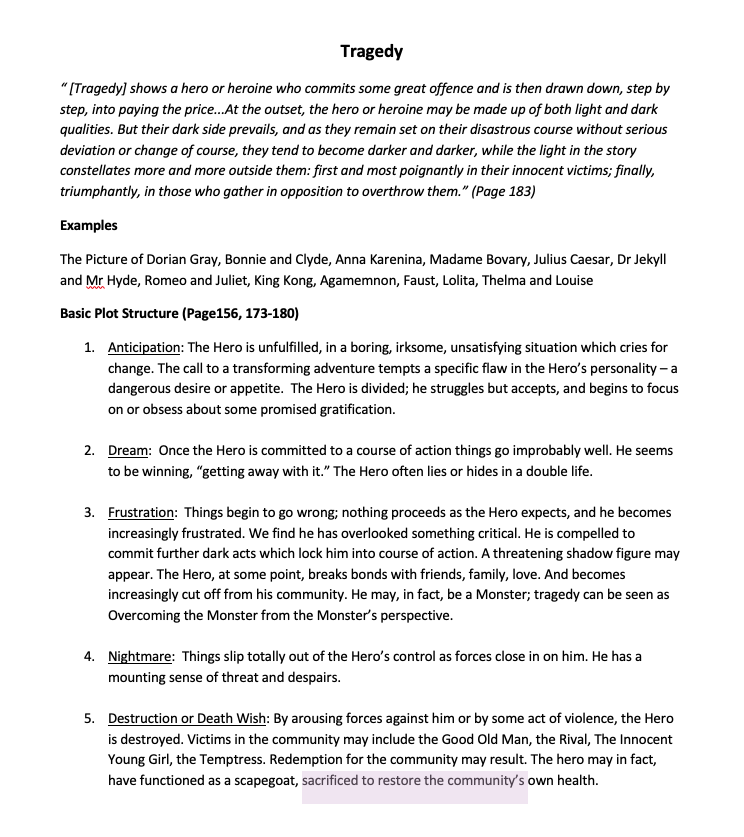Best Writing Courses to Master Storytelling
Never again will a single story be told as though it’s the only one. ~ John Berger
 This Berger quote opens The God of Small Things by Arundhati Roy, a literary novel released in 1997 that went on to win the Booker Prize. It was Roy’s first book, and took her many years to write (you can certainly deduce this when you note her remarkable care and attention to detail and language).
This Berger quote opens The God of Small Things by Arundhati Roy, a literary novel released in 1997 that went on to win the Booker Prize. It was Roy’s first book, and took her many years to write (you can certainly deduce this when you note her remarkable care and attention to detail and language).
This post is the result of three weeks of conversation about a literary novel that makes the reader work hard. There’s a lot to say about it, too much for a single post, but this post will get you close to the method of thinking and teaching here at Blackbird. As we analyzed in class, the content that follows will include how Roy progressed her plot while digressing into character sketches, her use of something known as consecution, and the naming of the hero/plot structure along with a plot chart we created in class.
CONTEXT:
Place: The town of Ayemenem in the Southwestern state of Kerala, India
Time Period: December 1969-June 1993
Social Prejudice: At the time, Kerala’s formation of different social groups was done by using the Indian caste system as a foundation. This system split the members of society into four groups of people, with the lowest and most discriminated being the ‘Paravan’, or “Untouchable”. Although there were legal measures set up against this particular system, its deeply rooted ties in Indian life made it difficult to completely dissolve this hierarchy.
Caste System: Characters are placed and born into a hierarchy of social status. This caste system prevents any person from raising their status forced to stay at the level they were born into. While life in the higher levels is respectable and easy, the Untouchables at the bottom of the caste system lead lives of manual labor and forced isolation.
NOTE: And if you go to the gabes site, and I suggest you do, you can then read the complete summary that will likely this post more rewarding to read (unless you’ve read The God of Small Things that is. And I hope you have. It’s an important book that deserves to be in your canon).
Before we hit the teachings, let me first offer up our general discussion about the emotional response to reading this book. This chart is from one class and lists a few of the observations. A la George Saunders, all comments/reactions are valid and important. A writer needs to have room to react and have that reaction honored. The readers experience matters.

What’s particularly interesting in this initial discussion was the sense of not being able to track the forward motion of the main plot line. Roy’s digressions threw most of us into frustration, anger, a sense of being stupid, and even surrender (meaning people stopped reading). But what’s interesting is that this book seems to be working with a circular modality of storytelling that we’ve only now touched on…chiasm. Which is fascinating, and why I laid the circular model into the W model we usually use for reference.
Chiasm is a traditional literary form, but the design principle is equally applicable in music and the visual arts. It consists of paired events arranged symmetrically around a center core. The simplest form is B, A, B, with A representing the center and B the symmetrical rings. The next level is C, B, A, B, C, and the sequence continues on from there. You can see the basic pattern; it’s essentially a stone thrown into a pond with concentric circles fanning out around it.
~ Eye of the Heart by Cynthia Bourgeault
Okay, so I don’t have any concrete answers about this book using a chiastic model; it would take deep analyus it (which would take a while), but it’s interesting to ponder. I wouldn’t doubt, not for a moment, that Roy was using a form of chiasm, or that it evolved naturally, because circular methods are common in Ayurvedic traditions, according to one of the students in class.
Now let’s look closer at the character sketch digressions (digressive spirals??) that made us feel so perplexed.
 1) How does Roy keep her plot moving forward while digressing into long character sketches to include Baby Kochamma (Navomi Ipe), Pappachi (Benaan John Ipe), Rahel, Estha, and so on?
1) How does Roy keep her plot moving forward while digressing into long character sketches to include Baby Kochamma (Navomi Ipe), Pappachi (Benaan John Ipe), Rahel, Estha, and so on?
First of all, let’s make sure we are clear of the plot lines:
Main Plot Line (MPL) ~ The death of Sophie Mol. And how did she die?
Underlying Plot Line (UPL) ~ The murder of Velutha.
The answer: Roy uses a technique in which she lays in a line, amidst her digressions to character sketches and long backstory, to remind the reader to keep an eye on plot too. It’s a little pinch more than anything that says, “Hey! Remember…this is the BIG story I’m telling here.”
Examples to page 50: MPL pgs: 6, 7, 12, 14, 15, 17, 31, 32, 45, 49; UPL pgs: 8, 9, 10, 31, 32, 44.
Page 6 is actually the first reference to the death of Sophie Mol: “The government never paid for Sophie Mol’s funeral because she wasn’t killed at a zebra crossing. She had hers in…” This is then a long description of the church, the people in attendance, the funeral itself. Then the story moves from the funeral (no explanation of the circumstances of Sophie Mol’s death, just that it happened, she is a child, and some allusion to the fact that other children had something to do with the death) and then shifts to the 90’s with the main character, Rahel, home to see her twin Estha, who has been re-Returned (He was sent away from his family and twin sister after Sophie Mol died, though we are not told why.) On page 12, in the midst of backstory, this line is dropped in: “After Sophie Mol’s funeral…” And we are pinched to remember the plot again. On page 14: “Past Sophie Mol’s yellow church…” And page 15: “…for what had happened.” Page 17: “The Loss of Sophie Mol stepped softly around the Ayemenem House…” Page 31: “Even before Sophie Mol’s funeral, the police…” And so on.
Exercise: Continue through and track this technique, as I’ve done here, adding more page numbers to this list and highlighting how it is done in your copy. In doing so, you are learning this technique for your own work. It’s effective when you want to move through great swatches of time.
Other books we’ve read at Blackbird that employ a similar technique include: Transcription by Kate Atkinson. Shipping News by Annie Proulx. Nickel Boys by Colson Whitehead. A Prayer for Owen Meany by John Irving.
2) The use of consecution in Roy’s story telling.
First, let’s start with definitions taken from the Jason Locatelli essay on Gordon Lish, who used consecution as the basis of his own teaching method:
Definition:
- Lish: …a writing process of “going forwards by looking backwards.”
- Lacotelli: …Decoded, consecution seems to mean moving forward in a story while keeping in mind what has gone before through the use of repetition.
- Christine Schutt (student and writer published by Lish while he was an editor at Knopf): Each sentence is extruded* from the previous sentence; look behind when you are writing, not ahead. Your obligation is to know your objects and to steadily, inexorably darken and deepen them…Query the preceding sentence for what might most profitably be used in composing the next sentence…The sentence that follows is always in response.
*Extrude, verb1: to force, press, or push
Note: Schutt uses extrude here and that’s important. The point of consecution is to grab the energy of image in your previous sentences and bring them forward in a way that holds the energy. It’s like getting coal out of a mine and maintaining the integrity of the energy within in order to use it to warm your home.
Pages then where consecution is put into place and then reused:
- Poof – pgs. 4/37+
- Orangedrink Lemondrink Man – pgs. 5/
- Swollen house – pg. 1 -> swollen cupboards pg. 11/ (and baby’s feet are swollen. pg.__)
- Love in Tokyo, toy watch, red sunglasses, pgs. 37/
- Exnunbabyaunt pg. 44 (brought forward from character sketch)
Exercise: Go through now and add the pages where the phrases are continued. Above, I’ve given you one example, now you add in the rest.
3) Plot: Before we can talk about which plot this book might work on, we need to ask who the protagonist might be. And in class many options were discussed. Velutha, the untouchable lover of Ammu who is falsely accused of Sophie Mol’s death and killed by the police. Or Ammu, the mother of the twins who loves Velutha and bravely pursues and then admits to this love. Or Estha and Rahel, as the twins holding the title of shared protagonist. All of these are possible, and while I could fish for you, the way for each of us to learn about plot is to do the work ourselves. So go through the book and chart the course of a specific character. For those who believe it was Ammu then, go through chapter by chapter and make note of her progressions. What do you see? Same with Velutha, and the Estha/Rahel combo.
Everyone agreed that this was a tragedy though and so, here is that plot description. To grow into this, you can then chart on the five part structure of this plot, the story of the character you believe represents the protagonist who gets darker and darker.

The final conclusion we arrived at was that Rahel was the primary protagonist for the fact that she starts and ends (very nearly) the story. She is the one with agency too and with that agency, too, and with that agency, she takes the dark, darker, darkest path ending with sleeping with her brother. it is Rahel who instigates this sexual encounter in what is a spiral of declines throughout this book.
That Roy ends Small Things with a flashback of the sexual relationship between Ammu and Velutha is an interesting move too. What is worse than incest? It seems that the author is saying that this love affair between an untouchable and touchable is worse, or perhaps on par. Both of these sexual encounters then are a way to highlight the degradation of the community as a whole.
Exercise: With your plot chart in hand, can you chart Rahel’s decline and note the page numbers next to each of the five sections of plot? Can you see, for yourself, how she is the tragic protagonist on a slippery slope of self-destruction? Remember to note time. There is a forward/back motion happening here so various moments of decline are in different times (and that can work within the overall structure too).
Good luck!


